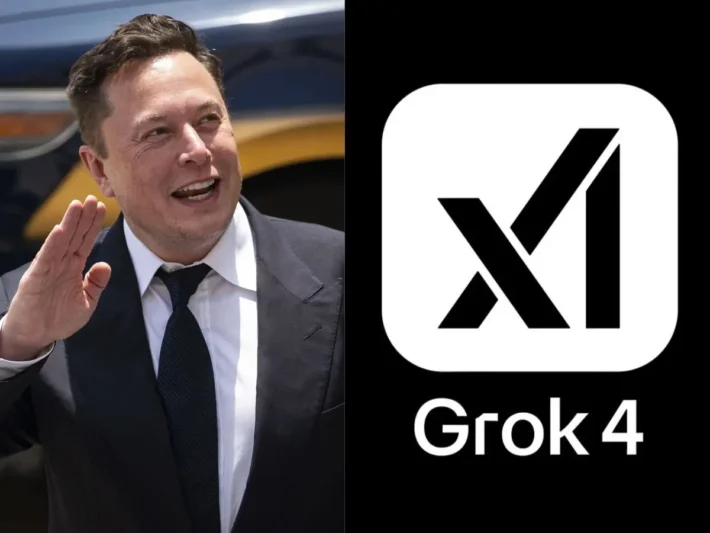How to Effectively Judge AI Artworks from ChatGPT

Since the integration of image generation into ChatGPT, most recently via the multimodal GPT‑4o model, AI‑generated paintings have reached unprecedented levels of realism. While artists and designers leverage these tools for creative exploration, the flood of synthetic images also poses challenges for authenticity, provenance, and misuse. Determining whether a painting was crafted by human hand or generated by ChatGPT is now a vital skill for galleries, publishers, educators, and online platforms. This article synthesizes the latest developments—watermarking trials, metadata standards, forensic algorithms, and detection tools—to answer key questions about identifying AI‑generated paintings.
What capabilities does ChatGPT now offer for painting generation?
How has ChatGPT’s image generation evolved?
When ChatGPT first introduced DALL·E integration, users could transform text prompts into images with reasonable fidelity. In March 2025, OpenAI replaced DALL·E with GPT‑4o’s ImageGen pipeline, dramatically boosting rendering precision and contextual awareness. GPT‑4o can now interpret conversational context, follow complex multi‑step prompts, and even restyle user‑uploaded photos, making it a versatile tool for generating paintings in myriad styles .
What styles and fidelity can it produce?
Early adopters have showcased GPT‑4o’s prowess by “Ghibli‑fying” photographs into Studio Ghibli–style illustrations, achieving near‑indistinguishable quality compared to hand‑drawn art . From hyper‑realistic oil paintings to minimalist line art and pixel‑art game sprites, ChatGPT’s image engine can mimic diverse artistic techniques on demand . The model’s ability to leverage its broad knowledge base ensures coherent composition, accurate lighting, and stylistic consistency even in elaborate scenes.
Why is detecting AI‑generated paintings important?
What risks do undetected AI paintings pose?
Unmarked AI paintings can fuel misinformation, deepfake scams, and copyright disputes. Malicious actors could fabricate evidence (e.g., doctored historical illustrations) or mislead collectors by presenting AI works as rare originals. In online education and social media, synthetic art may spread as authentic, undermining trust in visual evidence and expert curation.
How is provenance and authenticity affected?
Traditional art authentication relies on provenance research, expert connoisseurship, and scientific analysis (e.g., pigment dating). However, AI‑generated paintings lack human provenance and can be created instantly at scale. A recent Wired investigation highlighted how AI analysis debunked a purported Van Gogh (“Elimar Van Gogh”), showing 97% probability it was not by Van Gogh—underscoring AI’s dual role in both creating and detecting fakes . Without robust detection methods, the art market and cultural institutions face increased risk of duplicate frauds and market distortions.
How does watermarking provide a solution?
What watermarking features are being tested?
In April 2025, Cybernews reported that OpenAI is experimenting with watermarking for images generated by GPT‑4o, embedding either visible or hidden marks to signal synthetic origin . SecurityOnline detailed that a forthcoming “ImageGen” watermark may appear on images created via ChatGPT’s Android app, potentially labeling free‑tier outputs with an overt mark reading “ImageGen” .
What are visible vs. invisible watermark approaches?
Visible watermarks—semi‑transparent logos or text overlays—offer immediate, human‑readable indicators but may detract from aesthetics. Invisible (covert) watermarks use steganographic techniques, subtly altering pixel values or frequency coefficients to encode a secret key undetectable by casual viewers. According to The Verge, OpenAI plans to embed C2PA‑compliant metadata indicating OpenAI as the creator, even if no overt watermark appears in the image itself .
What are the limitations and user circumvention tactics?
Despite promise, watermarking faces practical hurdles. Reddit users report that ChatGPT Plus subscribers can save images without the free‑tier watermark, suggesting uneven adoption and potential for misuse . Simple post‑processing steps—cropping, color adjustment, or re‑encoding—can strip fragile steganographic marks, defeating invisible watermarks . Moreover, without a universal standard, proprietary watermark schemes hinder cross‑platform verification.
What forensic techniques go beyond watermarking?
How does metadata analysis help detect AI images?
Digital photographs typically carry EXIF metadata—camera make, model, lens, GPS coordinates, and timestamp. AI‑generated paintings often lack consistent EXIF fields or embed anomalous metadata (e.g., a nonexistent camera model). For instance, The Verge notes that GPT‑4o images include structured C2PA metadata specifying creation date and origin platform, which forensic tools can parse to verify authenticity . A missing or malformed provenance chain is a red flag prompting deeper inspection.
What pixel‑level artifacts betray AI generation?
Generative diffusion models, like GPT‑4o’s ImageGen, iteratively denoise random noise to form images. This process leaves characteristic artifacts—smooth gradients in low‑contrast regions, concentric noise rings around edges, and atypical high‑frequency spectra not found in natural photographs. Researchers train convolutional neural networks to detect such statistical anomalies, achieving over 90% accuracy in distinguishing real paintings from synthetic ones .
How can noise and texture analysis reveal diffusion patterns?
By computing local Laplacian filters and examining noise power spectra, forensic algorithms can identify unnatural uniformity or repetitive micro‑patterns typical of AI outputs. For example, an AI‑generated landscape may exhibit overly consistent brushstroke textures, whereas human artists introduce organic variation. Tools that visualize heat maps of suspect regions highlight where statistical deviations occur, aiding expert review.

What tools and platforms exist for detection?
Which commercial and open‑source detectors lead the field?
A recent Medium review tested 17 AI‑detection tools and found only three with reliable performance against cutting‑edge models like GPT‑4o. Among them, ArtSecure and DeepFormAnaylzer both combine metadata parsing with ML‑based artifact detection, offering browser plugins and API integrations for publishers and museums. Open‑source projects like SpreadThemApart provide C2PA‑aware watermark embedding and extraction methods without retraining the underlying diffusion models.
What internal detection tool is OpenAI developing?
While OpenAI has yet to publicly release an image‑detection API, company insiders hinted at plans similar to its text‑watermark detector (which boasts 99.9% accuracy on long texts) . Observers expect a future “ImageGuard” service that cross‑references C2PA metadata, hidden steganographic marks, and pixel‑level forensics to flag suspicious images before they are shared or published.
How are cultural institutions integrating AI for authentication?
Leading museums and auction houses are piloting AI‑assisted authentication workflows. The Van Gogh Museum collaborated with AI researchers to cross‑validate expert assessments using neural‑network‑driven pigment and brushstroke analysis, increasing confidence in attributions while accelerating review times . Such hybrid human‑machine approaches illustrate how AI can both create and verify artworks.
What best practices should stakeholders adopt?
How can standardized provenance protocols improve transparency?
Adoption of open provenance standards—such as the Coalition for Content Provenance and Authenticity (C2PA)—ensures that generative platforms embed verifiable metadata in a consistent format. This enables third‑party tools to parse creation details, chain‑of‑custody records, and editing history, regardless of origin .
Why is clear labeling of AI paintings essential?
Visible labeling (e.g., watermarks, captions, or disclaimers) fosters user trust and mitigates spread of misinformation. Regulatory proposals, including the EU’s forthcoming Artificial Intelligence Act, may mandate clear disclosure of synthetic content to protect consumers and cultural heritage .
Should detection strategies be layered and multilayered?
No single method is foolproof. Experts recommend a defense‑in‑depth approach:
- Watermark and metadata checks for automated flagging.
- ML‑based pixel forensics to detect diffusion artifacts.
- Human expert review for contextual and nuanced judgment.
This layered strategy closes attack vectors: even if adversaries strip watermarks, pixel‑analysis can still catch telltale signs.
Conclusion
The rapid evolution of ChatGPT’s image‑generation capabilities—from DALL·E to GPT‑4o—has democratized the creation of high‑quality paintings, but also amplified challenges in verifying authenticity. Watermarking trials by OpenAI offer a first line of defense, embedding overt or covert marks and standardized C2PA metadata. Yet watermark fragility and inconsistent adoption demand complementary forensic techniques: metadata scrutiny, pixel‑level artifact detection, and hybrid human‑AI authentication workflows.
Stakeholders—from digital platforms and academic publishers to galleries and regulators—must embrace layered detection strategies, open provenance standards, and transparent labeling. By combining robust watermarking, advanced ML‑driven forensics, and expert oversight, the community can effectively distinguish AI‑generated paintings from human artworks and safeguard the integrity of visual culture in the age of generative AI.
Getting Started
CometAPI provides a unified REST interface that aggregates hundreds of AI models—including ChatGPT family—under a consistent endpoint, with built-in API-key management, usage quotas, and billing dashboards. Instead of juggling multiple vendor URLs and credentials.
Developers can access GPT-image-1 API (GPT‑4o image API, model name: gpt-image-1) and DALL-E 3 API through CometAPI. To begin, explore the model’s capabilities in the Playground and consult the API guide for detailed instructions. Note that some developers may need to verify their organization before using the model.



